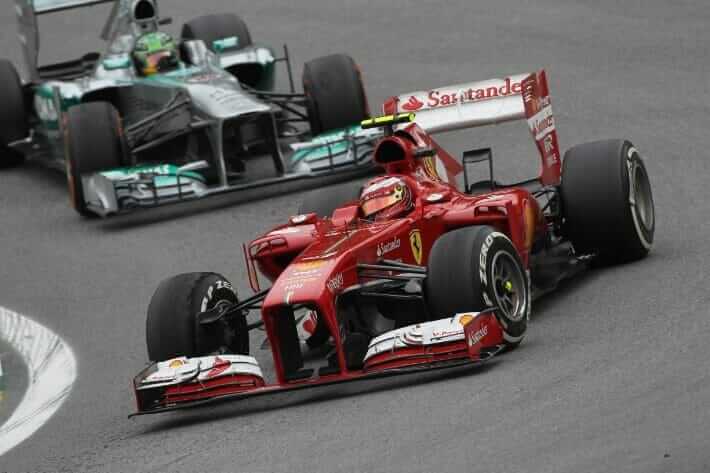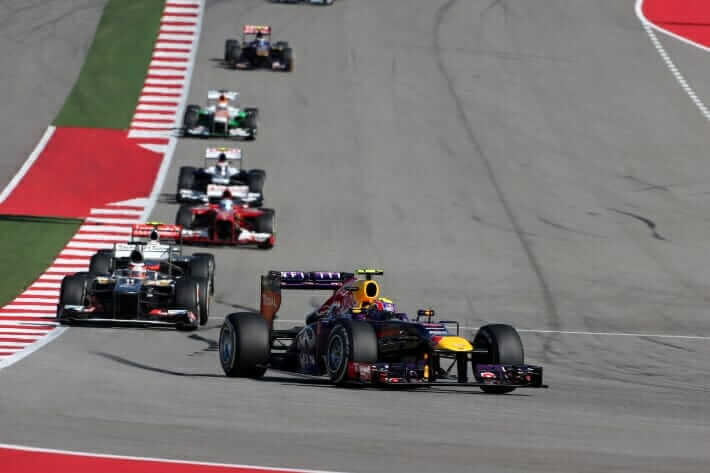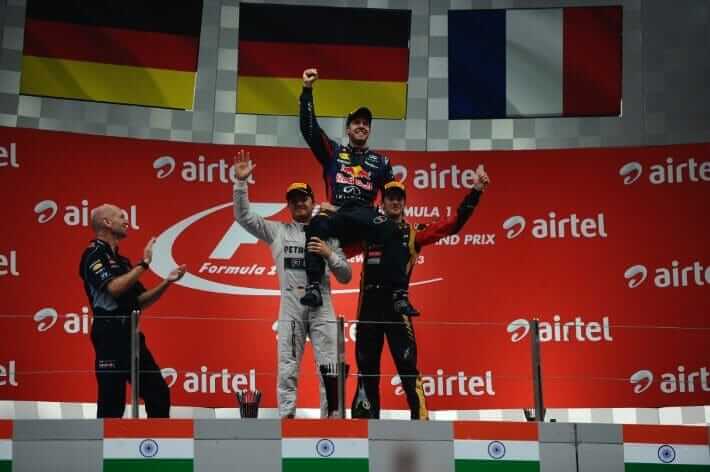These days the F1 calendar is so tightly packed that even when the sun has set on yet another championship it has already begun to rise on the next. The break over the F1 winter (our summer) is so short, only three months between seasons, that there is hardly enough time to process the previous season yet alone prepare for the next. I still can’t fathom how the teams manage to do it.
This break is particularly crammed with news and changes as Formula One prepares to emerge from its chrysalis as a colourful new Formula with more changes than we have seen in the sport since the 80’s.
With so many changes to a sport that already requires a certain amount of dedication to follow all the rules, technology and strategy that goes into F1, it can be a daunting task to any fan and an even more confusing one to any newcomers to the worlds fastest sport.
Fortunately, though teams, pundits and dedicated fans, there are those of us who believe that the sport we love is to be shred and acceptable to everyone. They have been hard at work though social media, on blog sites and through online videos to bring you all the latest in changes to rules, tech and driver lineups as they happen over the break.
To make it easier and save you the time and effort in sorting through everything I have created this cheat sheet to the 2014 Formula One season. Be sure to bookmark it and check back for updates as the driver line up fills out and some further rule changes are finalised.
The Drivers
With Mark Webber retiring from the sport and as teams look for new blood to become the next Sebastian Vettel and shake up their chances of getting ahead in the new look Formula One, there have been more changes to driver line ups than we have seen for some time in F1. Though there are still some cars to fill in the bottom tier, most teams have now completed their line up.
Below is a easy guide to who fits where and links to who they are, where possible, so you can familiarise yourself with who’s who and where they have come from.
| Team | Driver | Driver |
| Red Bull Racing | Sebastian Vettel | Daniel Ricciardo |
| Mercedes AMG Petronas F1 Team | Lewis Hamilton | Nico Rosberg |
| Scuderia Ferrari | Fernando Alonso | Kimi Räikkönen |
| Lotus F1 Team | Romain Grosjean | Pastor Maldonado |
| Vodafone McLaren Mercedes | Jenson Button | Kevin Magnussen |
| Sahara Force India F1 Team | Nico Hülkenberg | Sergio Pérez |
| Sauber F1 Team | Adrian Sutil | Esteban Gutiérrez |
| Scuderia Toro Rosso | Jean-Éric Vergne | Daniil Kvyat |
| Williams F1 Team | Felipe Massa | Valtteri Bottas |
| Marussia F1 Team | Jules Bianchi | Max Chilton |
| Caterham F1 Team | Kamui Kobayashi | Marcus Ericsson |
Driver numbers
Up to now drivers were assigned numbers at the start of each season based on their standing in the previous years championship. This year however drivers will be asked to choose their race number, between 2 and 99, for the duration of their career in the FIA Formula One World Championship.
Number 1 will be reserved for the current world champion, should they choose to use it. If more than one driver chooses the same number, priority will be given to the driver who finished highest in the previous year’s championship. The driver number must be clearly visible on the front of the car and on the driver’s crash helmet.
The Cars
There has been a lot of talk about engine changes for 2014 as we bid goodbye to the familiar 2.4 litre V8 formula and welcome back Turbo engines to F1, though this time vastly different with their new 1.6 liter V6 configuration. The emphasis on energy recovery and fuel efficacy over the raw power.
There has also been changes to fuel management and energy recovery, with KERS dropping a letter to become ERS. Even the aerodynamics and overall size and weight of the cars has changed for 2014.
So what exactly are the changes and what do they mean to the sport?

Below charts out the changes to the engine itself, the intent to become more fuel efficient without sacrificing performance.
| V6 engine and turbo | |
| 1.6L | Engine capacity, down from 2.4l |
| 6 | Number of cylinders, down from 8 |
| 100kg | Maximum amount of fuel teams can use per race from 2014 (around 140 litres). They currently use around 160kg |
| 100kg per hour | Maximum fuel flow rate |
| 500bar | Fuel injection pressure limit |
| 15,000 rpm | Maximum rpm, down from 18,000 |
So what about Energy Recovery? Why has KERS become ERS? Well it’s not because the system is indecisive. ERS stands for Energy Recovery System no longer limiting the harvest of purely Kinetic energy, where the K in KERS comes from.
This not only helps make the cars more efficient but increased performance as indicated by the chart below.
| Energy Recovery Units | |
| 161bhp | Power boost from ERS, up from 80bhp |
| 33.3s | Duration of boost available, up from 6.7s |
| 2 Mega Joules per lap | Maximum energy that can be harvested from ERS, up from 400kJ |
| 4 Mega Joules | Maximum energy that can be used from ERS, up from 400kJ |
So just how powerful will these new engines be? F1 teams stopped publishing numbers in the 90’s but since engine technology has not been changed since 2006, the general consensus is that the 2013 cars were producing approximately 750bhp from their V8 configuration. Experts estimate the new engines to produce approximately the same if not slightly more under boost and that is before the addition of the ERS system so expect the new cars to be closer to 900bhp while under electronically assisted boost.
Chassis and Aerodynamics
You could fill a university engineering degree with the changes to chassis size and areo dynamics in the 2014 cars. From the height of the nose to the width of the chassis and the number of wings in the rear, the 2014 F1 car is brand new so to give us all a break from charts and lists Formula 1 Expert have summed it up, among other changes, in this handy video.
The Rules
There are plenty of changes to the rule in 2014 from points to penalties and even a new trophy. To save trawling though the sizes of nuts and bolts and how much breakfast the drivers are allowed pre qualifying here is the basics you need to know as a spectator.
Points – double drivers’ and constructors’ points will be awarded at the final race of the Formula One season – Abu Dhabi for 2014 – in order to maximise focus on the championship until the end of the campaign.
Additional Friday practice drivers – we are used to seeing teams replace one of their race drivers with a test driver for opening practice on a Friday. However, from 2014 teams are able to run up to four drivers – though still only two cars – in either Friday session.
New penalties – race stewards will have the option to hand out five-second penalties for minor infringements. Additionally, any driver who earns 12 penalty points on their super licence during a 12-month period will be given a one-race ban.
Pole position trophy – a new trophy will be awarded to the driver who scores the most pole positions during the season. In the event of a tie, the trophy will be awarded to the driver who holds the greatest number of second places. If there is still a tie, the greatest number of third places will be taken into account and so on until a winner emerges.
The 2014 Calendar
So now we know who and what goes where, we probably need to look at when. Below is the current conformed calendar for 2014. If you are like me and can never keep track of what weekend is what then you may also want to subscribe to self updating calendar for your iCal, Google Calendar or whatever other calendar app you may use. I have used F1Ultimae for a few years and found it always up to date but a quick online search should easily find the right one for you.
|
Formula 1 Calendar 2014
|
||
| Date | Country | Location |
| 16 March | Australia | Melbourne |
| 30 March | Malaysia | Kuala Lumpur |
| 6 April | Bahrain | Sakhir |
| 20 April | China | Shanghai |
| 11 May | Spain | Catalunya |
| 25 May | Monaco | Monte Carlo |
| 8 June | Canada | Montréal |
| 22 June | Austria | Spielberg |
| 6 July | Great Britain | Silverstone |
| 20 July | Germany | Hockenheim |
| 27 July | Hungary | Budapest |
| 24 August | Belgium | Spa-Francorchamps |
| 7 September | Italy | Monza |
| 21 September | Singapore | Singapore |
| 5 October | Japan | Suzuka |
| 12 October | Russia | Sochi |
| 2 November | USA | Austin |
| 9 November | Brazil | São Paulo |
| 23 November | Abu Dhabi | Yas Marina |
Sources: Formula1.com, Crash.net, Sidepodcast.com,
















































On the subject of F1 and Ferrari, old Schuie is pretty crook, he hit his head while skiing. In a pretty bad way too by the sounds of things
http://sport.msn.co.nz/sportnews/othersports/8777301/schumacher-in-hospital-after-ski-accident
Yes, I heard about that via Twitter. Thoughts are with him and his family. James Allen has reported that the injures, though serious, are unlikely to be life threatening.